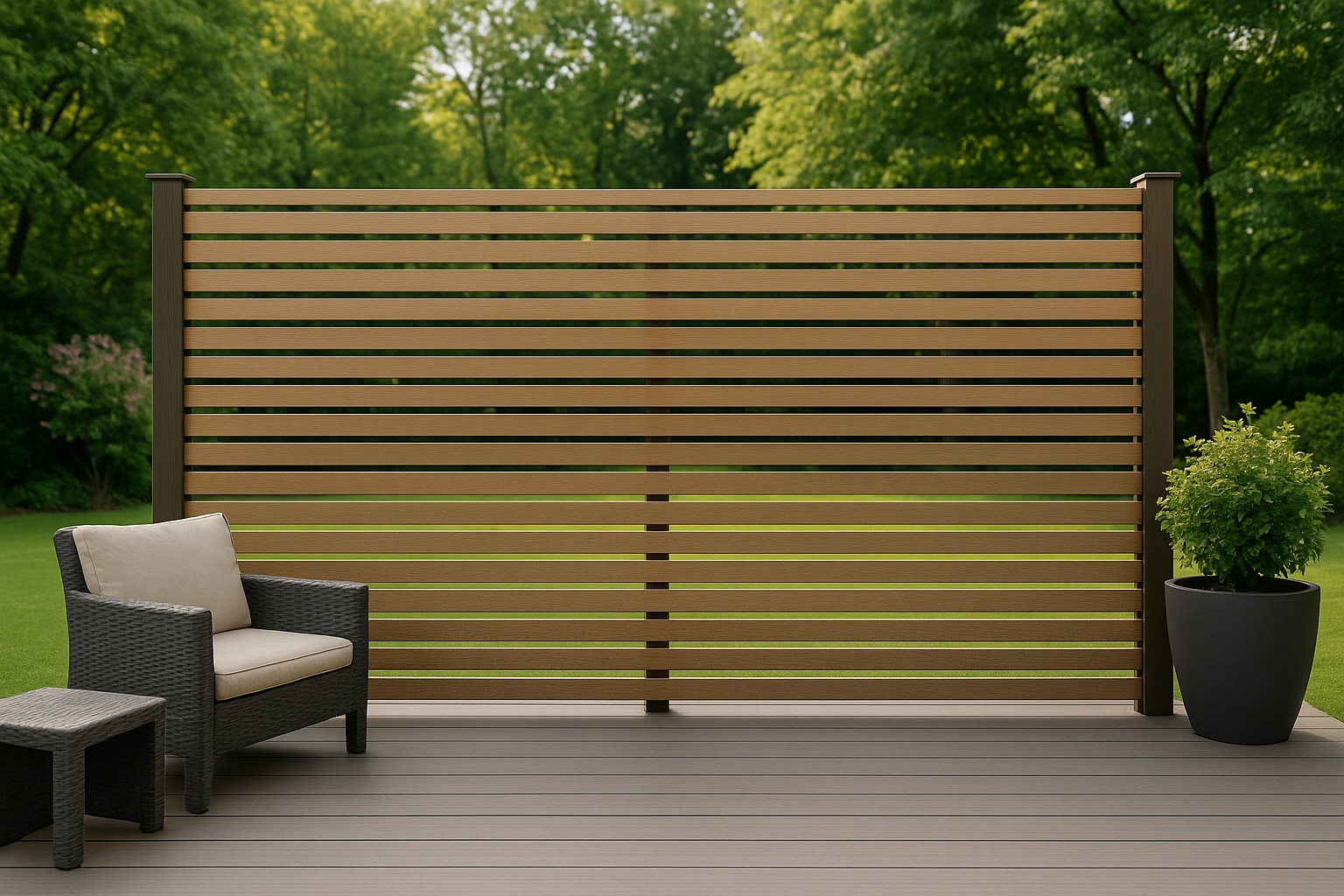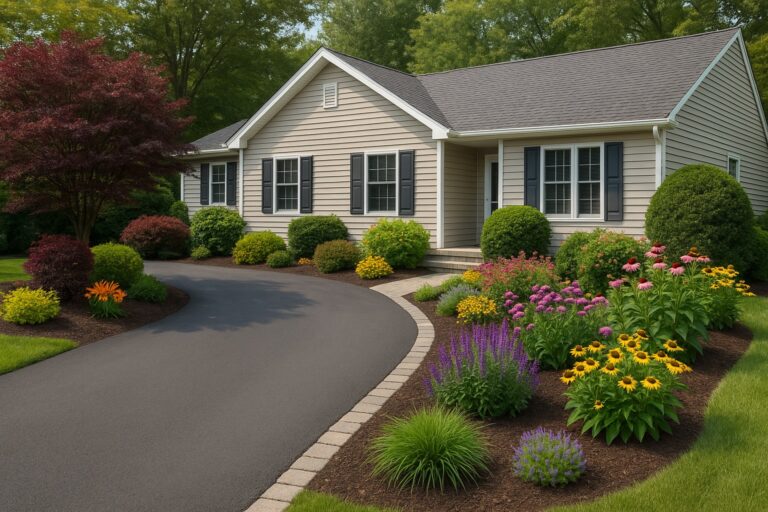A great deck should feel like an extension of your home—comfortable at midday and cozy in the evening—without turning into a stage for the neighborhood. Privacy doesn’t have to mean heavy walls or dim corners. The smartest solutions blend structure (screens, panels, rail infills) with adaptable elements (louvers, curtains, shades) and restrained planting (evergreen shrubs, vines), so you can fine-tune light, wind, and sightlines. The ideas below focus on clean lines, durable materials, and easy maintenance, giving you practical ways to create seclusion while keeping your deck bright, airy, and code-friendly.
Horizontal Slat Screen
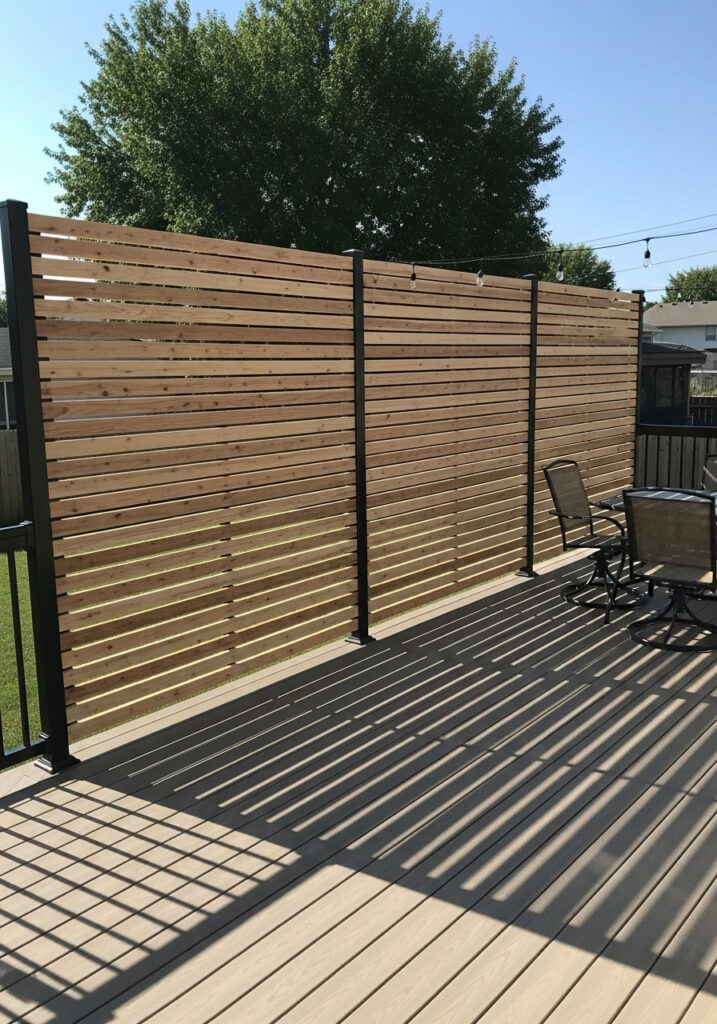
A horizontal slat screen is the modern workhorse of deck privacy. Tight spacing between boards blocks direct sightlines while allowing air to move freely, which matters on hot afternoons. Cedar or redwood boards read warm and natural; composites reduce upkeep if you prefer a set-and-forget solution. Break long runs into modular bays between powder-coated steel or rot-resistant wood posts so any future repair is just one panel, not the whole wall. Leave a one-inch sweep at the base for drainage and easy cleanup, and align board seams for a tidy, architectural look that complements both traditional and contemporary homes.
Adjustable Louver Panels
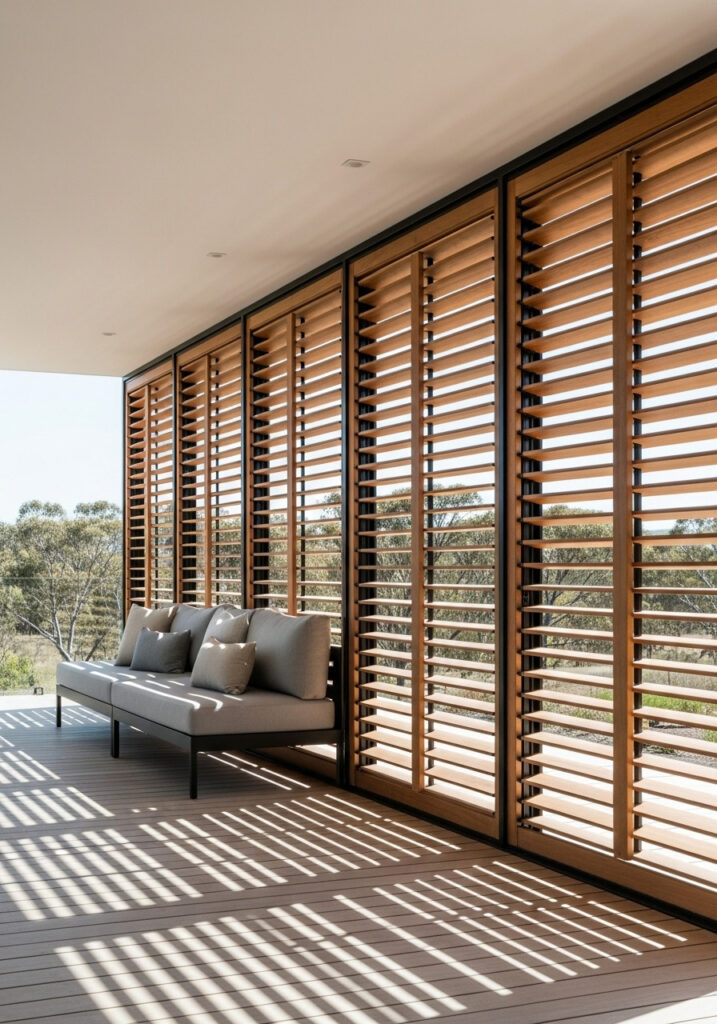
If your deck orientation changes exposure throughout the day, adjustable louvers let you steer privacy and daylight like a dimmer switch. Angle blades down to block views and glare or tilt up to catch breeze and sky. Aluminum louvers shrug off weather; hardwood louvers feel luxurious if you don’t mind seasonal oiling. Install within a rigid frame with concealed pivots and locking stops so the slats won’t chatter in wind. Keep the panel plane flush with, or just inside, the guardrail so you meet height and load requirements cleanly while visually thickening the boundary where people sit.
Frosted Glass Panels
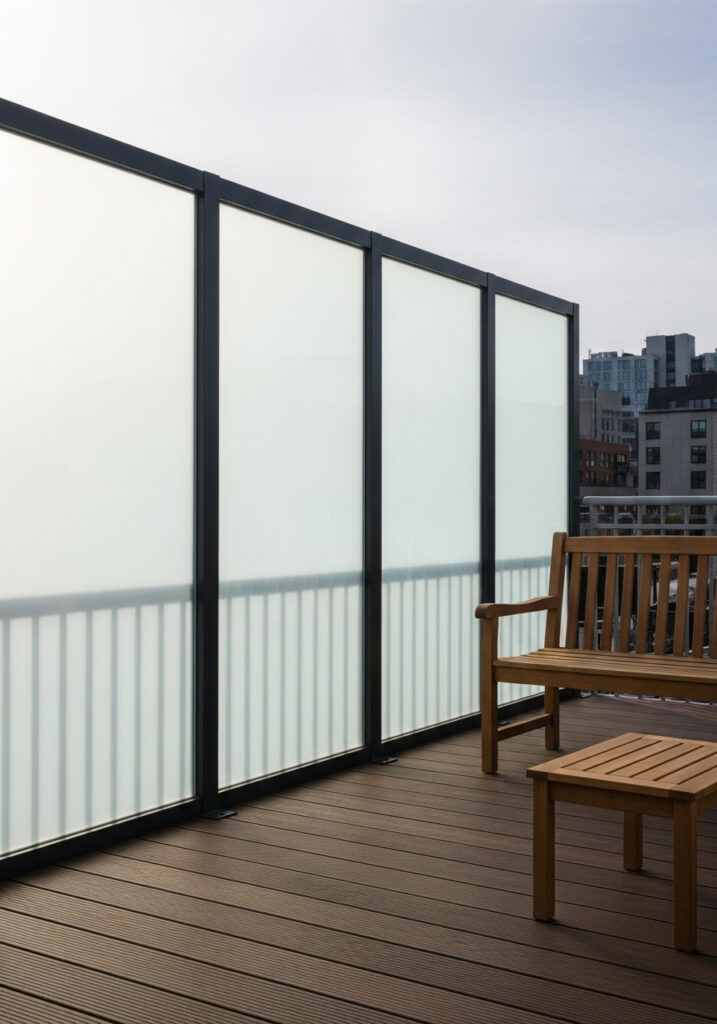
Small decks need privacy that doesn’t gobble up visual space. Frosted glass does exactly that: it blocks views while flooding the deck with diffuse daylight. Tempered or laminated panels set in slim aluminum channels feel crisp and contemporary, especially in darker frames. Specify at least 3/8-inch thickness for rigidity, silicone-set edges for clean lines, and a protective top cap to guard against impacts. A shallow sill with drainage notches prevents pollen and debris from staining the lower edge. The result is a bright, calm perimeter that still feels open.
Outdoor Privacy Curtains
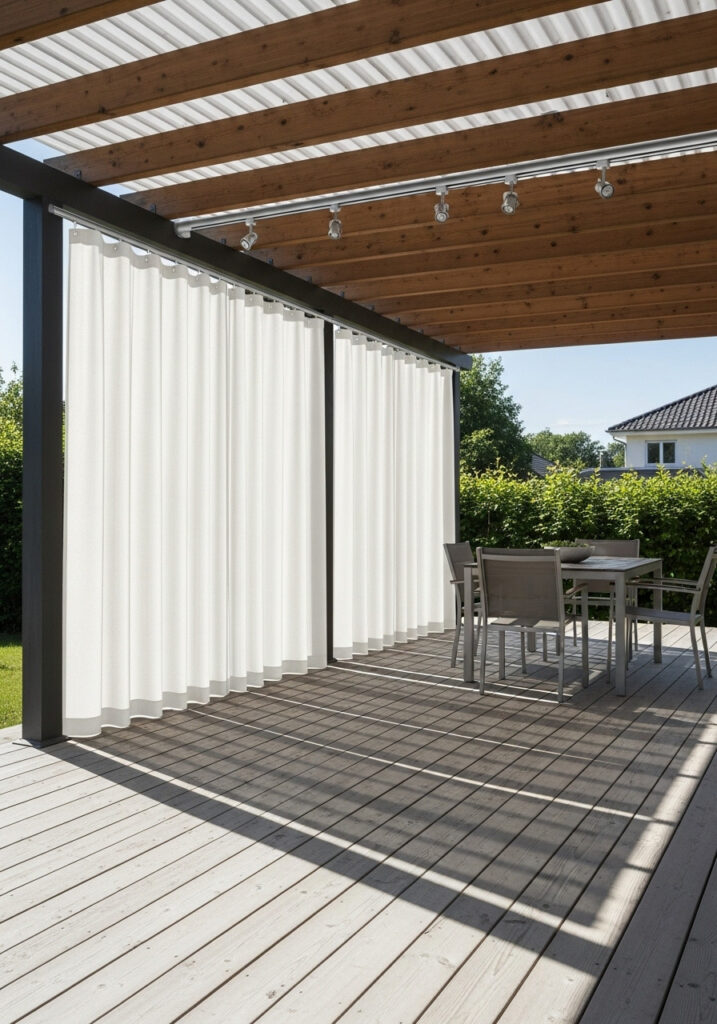
Curtains add softness and flexibility to a deck, transforming it into an outdoor “room” you can open and close at will. Choose solution-dyed acrylic or polyester that resists UV fade and mildew. Hang panels on stainless tracks under a pergola beam or soffit, and add tiebacks or discreet side channels to tame breezes. For fine-tuned control, layer a sheer with a heavier panel on a dual track—sheer for daytime glare control, opaque for evening seclusion. Wash seasonally and store dry to extend fabric life; the hardware needs little more than a quick wipe.
Sliding Barn-Door Style Screens
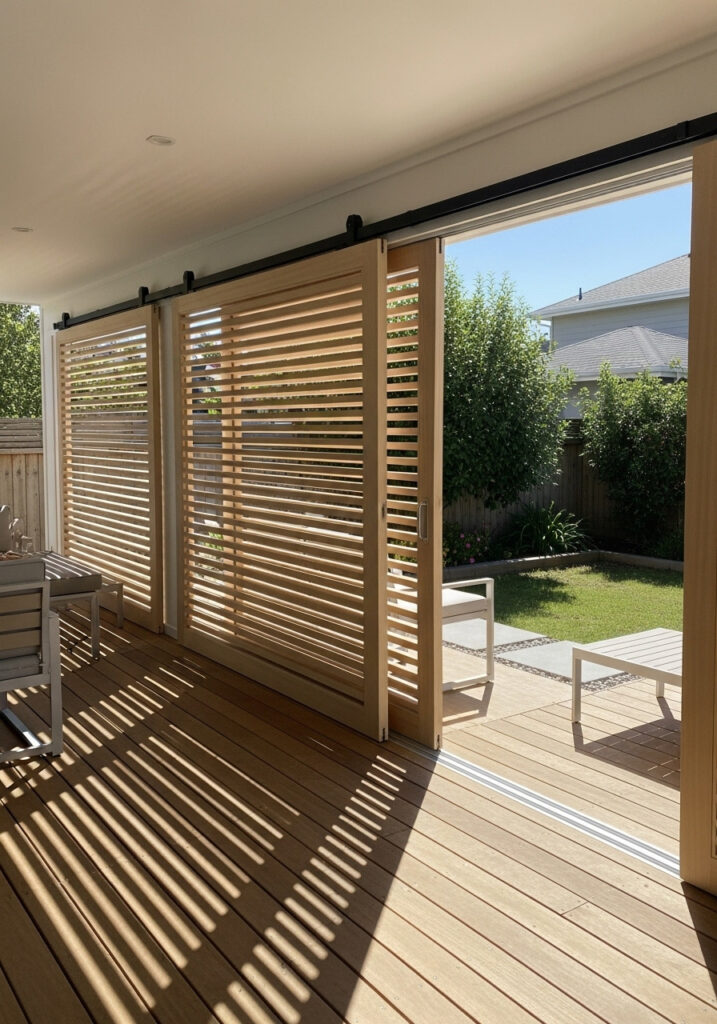
Sliding screens provide privacy on demand without committing to a fixed wall. Mount composite or hardwood slat panels on a weather-rated top track with a low-profile floor guide, and design a center overlap so there’s no gap when they’re shut. This is ideal where stairs, grills, or storage require occasional clearance. Add soft-close dampers and a simple latch so panels won’t drift in gusts. Because the panels stack to one side, you keep sightlines when you want them and seclusion when you don’t.
Laser-Cut Metal Screens
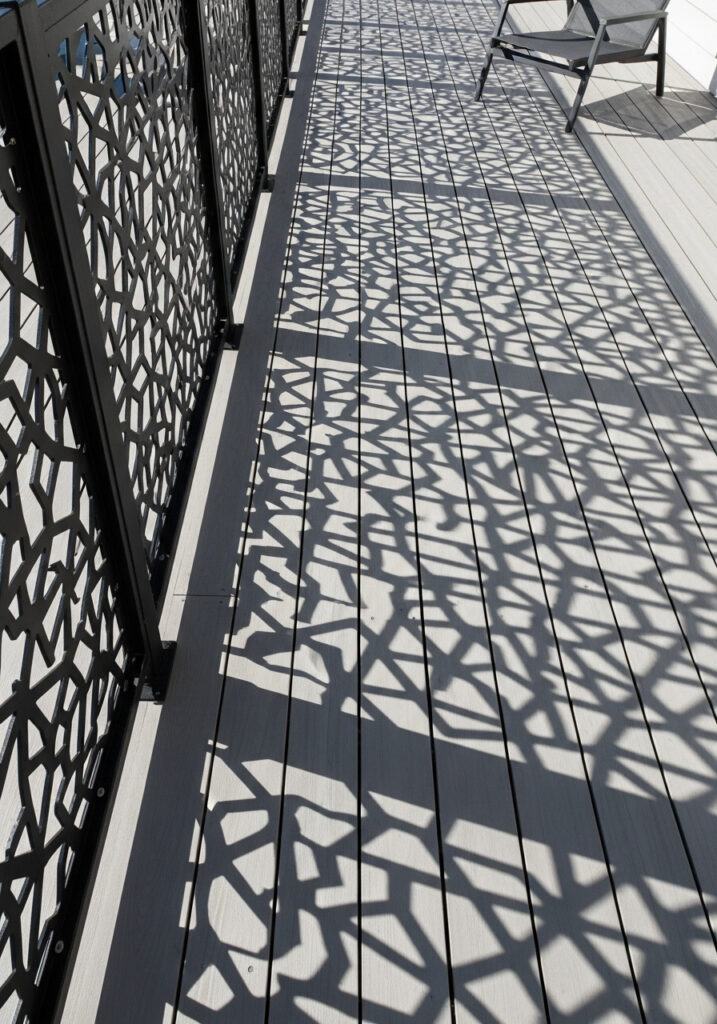
Perforated aluminum or steel panels deliver privacy with an artful edge. Powder-coated finishes resist corrosion and let you choose deep, neutral tones that visually recede. Pick a pattern density that obscures seated eye level while still admitting sparkle and airflow. On windy sites, integrate thin stiffeners behind larger cutouts and mount panels slightly off the deck to encourage drainage. Repeating two or three motifs across a run reads custom without getting busy, especially when framed in consistent posts.
Corner Nook with Built-In Bench and Screen
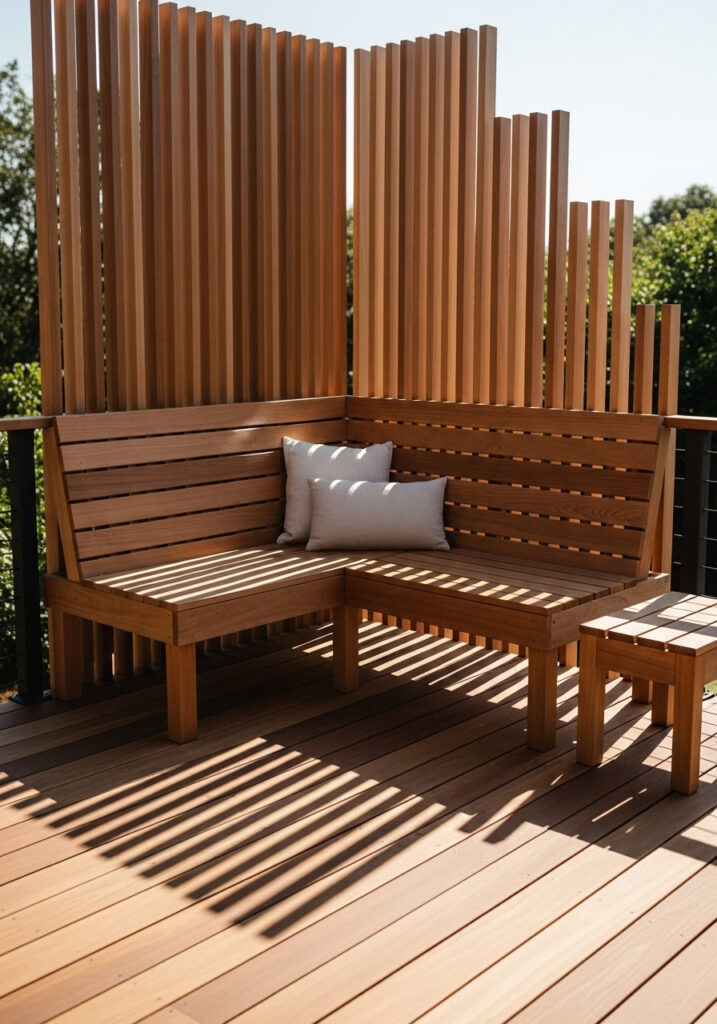
You don’t always need to wrap the entire perimeter. Concentrate privacy where you’ll linger: a built-in L-bench tucked into the most exposed corner, backed by a stepped screen. Storage under the seat swallows cushions and games, and a slightly taller section at the corner blocks the sharpest view angle. As the screen steps down toward the open sides, the deck stays bright and connected to the yard. This targeted approach saves materials and keeps the layout feeling open.
Planter Wall with Evergreen Shrubs
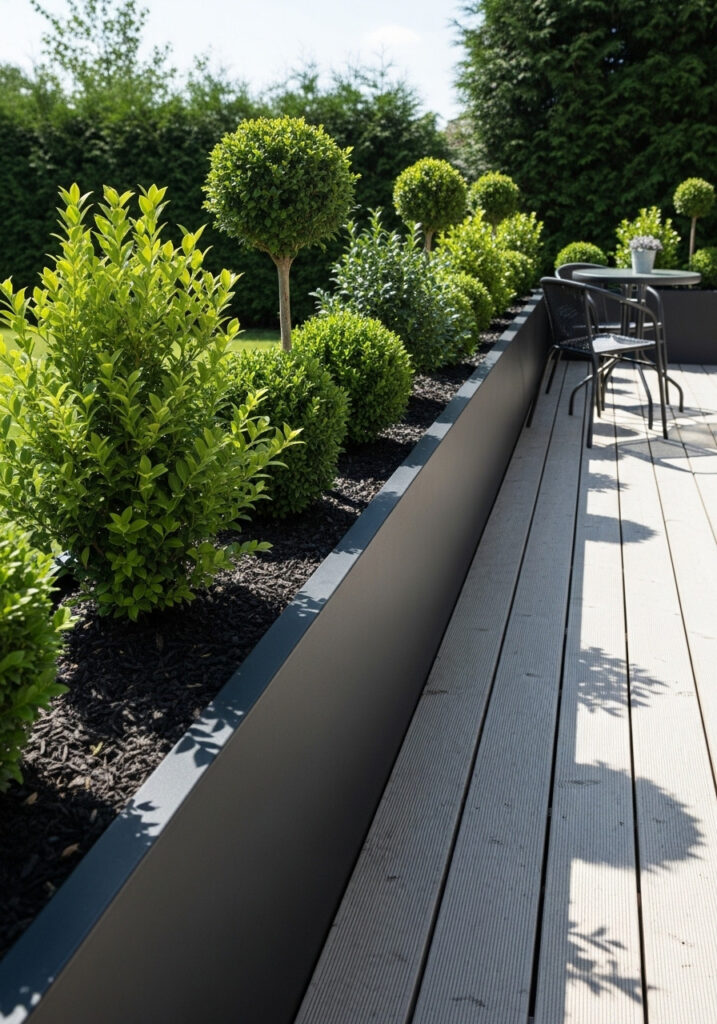
Prefer greenery without the maintenance of tall trees? Build a linear wall of deep trough planters filled with evergreen shrubs—boxwood, dwarf holly, compact yew, bay laurel, or small arborvitae cultivars. Fiberglass planters reduce weight; a drip line with a pressure regulator keeps moisture steady. Shear once or twice a year for a uniform top. This living barrier reads polished and quiet, stays attractive year-round, and avoids the mess of deciduous leaves blowing onto the deck.
Trellis Wall with Climbing Vines
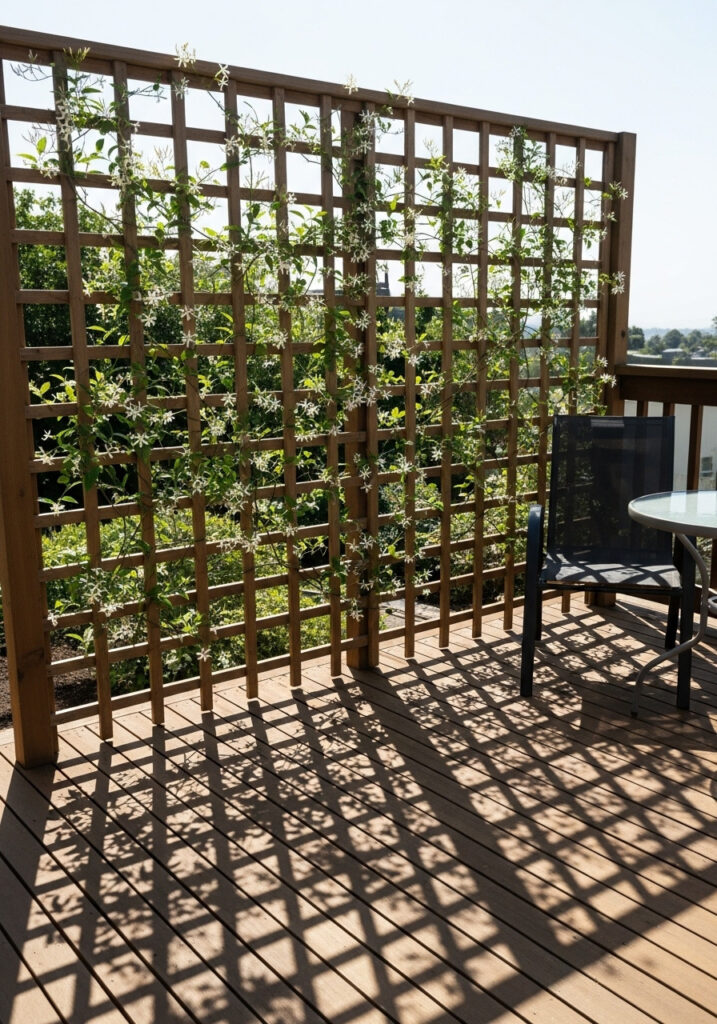
A trellis delivers filtered privacy immediately and full coverage as vines mature. Build a 2–3-inch stand-off frame so foliage can weave without trapping moisture, and use stainless cables or a square lattice. For fragrance and quick growth, plant star jasmine; for color, try clematis or climbing roses. Generous planters with slow-release fertilizer and a simple drip loop make care easy. Even in winter, the bare trellis looks intentional—unlike ad-hoc netting—keeping the deck tidy year-round.
Privacy Railing with Solid Infill
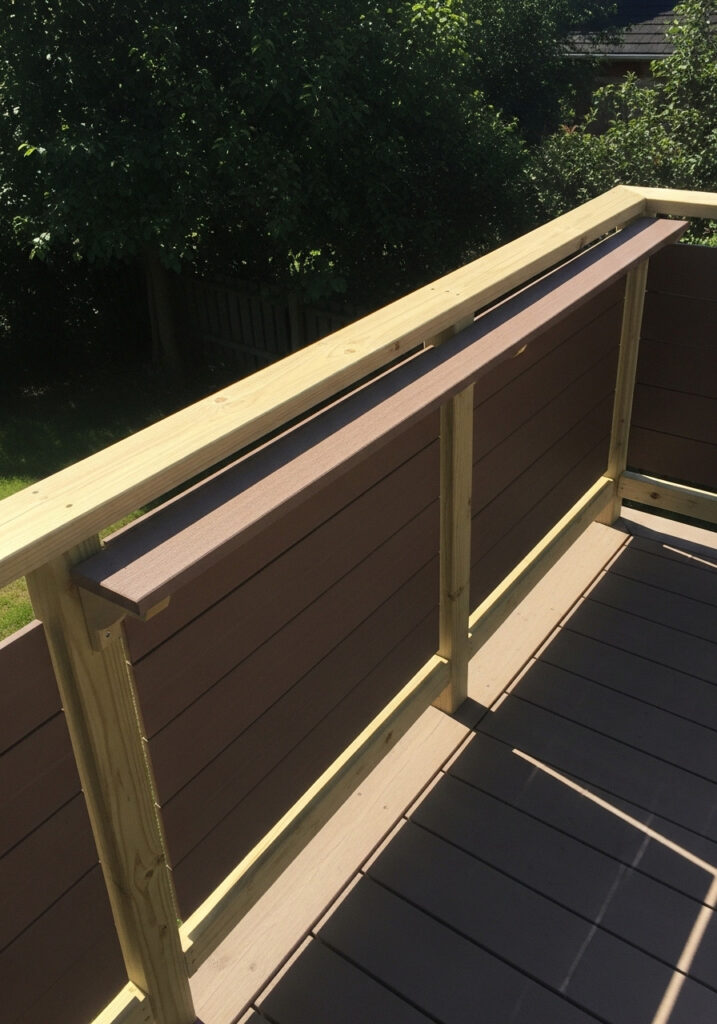
Turn a required safety element into a privacy feature by replacing balusters with solid infill where people sit. Shiplap boards, composite sheets, or alternating wood-and-metal strips block low sightlines yet preserve sky and breeze above. Keep the top rail continuous for a clean line and integrate a narrow ledge for drinks or herb pots. This approach is especially effective on small decks where a full-height wall would feel heavy.
Mixed-Material Perimeter (Wood + Metal)
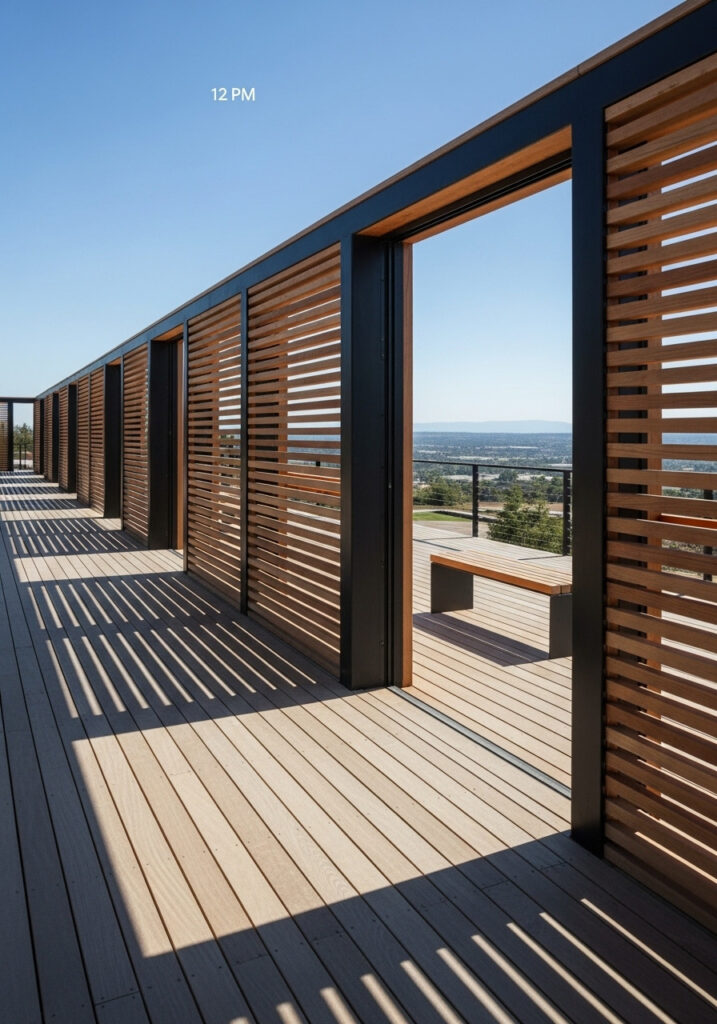
Mixing materials tempers visual weight and looks custom. Alternate short bays of horizontal cedar with slender black steel frames; place opaque bays near neighbors and leave a few open or translucent bays where you want borrowed views. Cap post tops and seal wood end grain to prevent water intrusion. Repeating modules add a measured rhythm that keeps long decks from feeling monolithic while still delivering real privacy where it’s needed most.
Twin-Wall Polycarbonate Screens
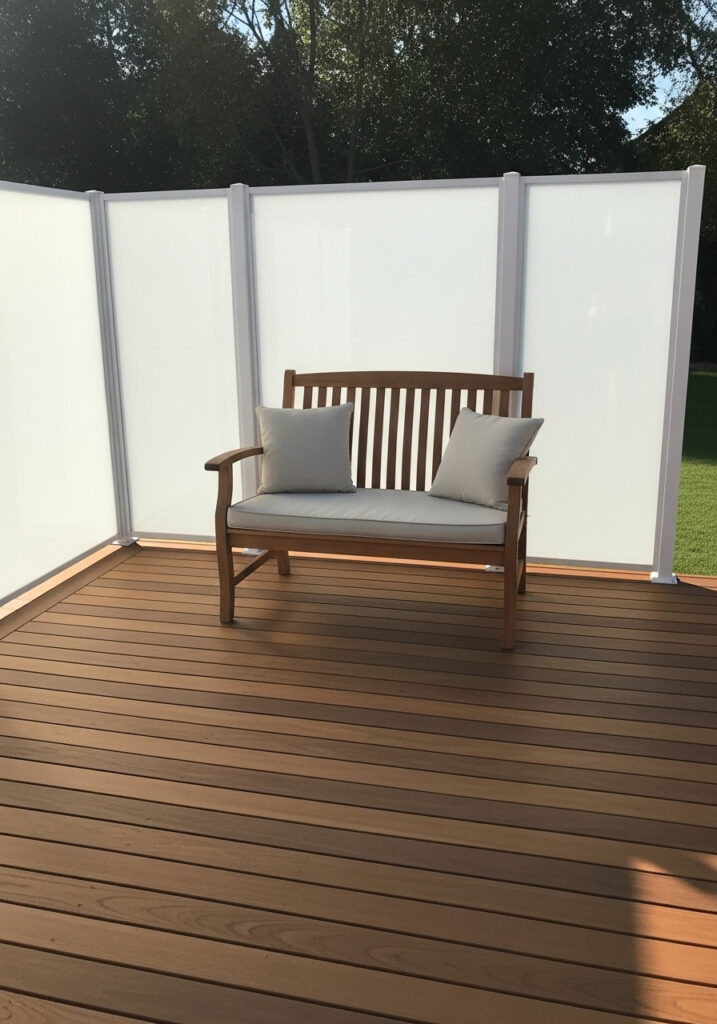
Opal or bronze twin-wall polycarbonate screens blur views, tame wind, and admit soft, even light at a fraction of the weight of glass. Panels slide into aluminum H-profiles with ventilated U-caps that manage condensation. The subtle glow reads calm and keeps adjacent interiors bright. Clean with soapy water and a microfiber cloth; avoid abrasives to preserve clarity. It’s a smart choice for decks that need daylight and wind protection more than dramatic vistas.
Drop-Down Exterior Shades
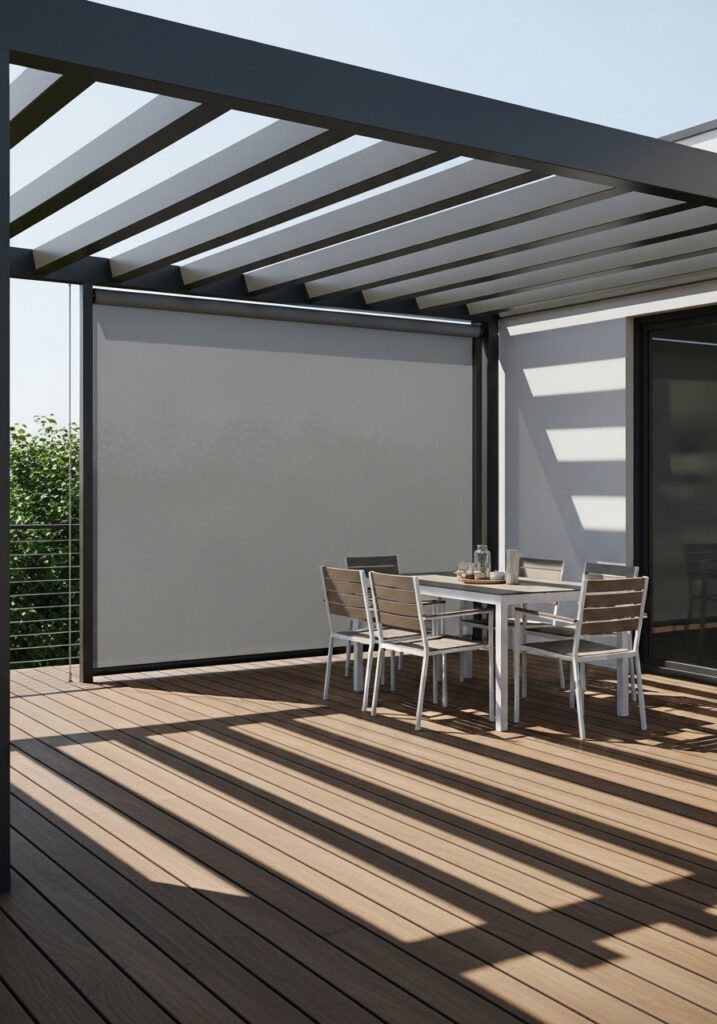
Exterior roller shades vanish when not needed and lower instantly for privacy and glare control. Solar fabrics with low openness blur neighbors while preserving outward views; blackout weaves deliver maximum privacy on close lot lines. Side cables or channels prevent sway. Mount under a pergola beam or soffit, use stainless hardware, and specify a crank or motor rated for outdoor duty. Pair darker fabric toward neighbors with lighter fabric facing your garden to balance heat gain and brightness.
Folding Privacy Partitions
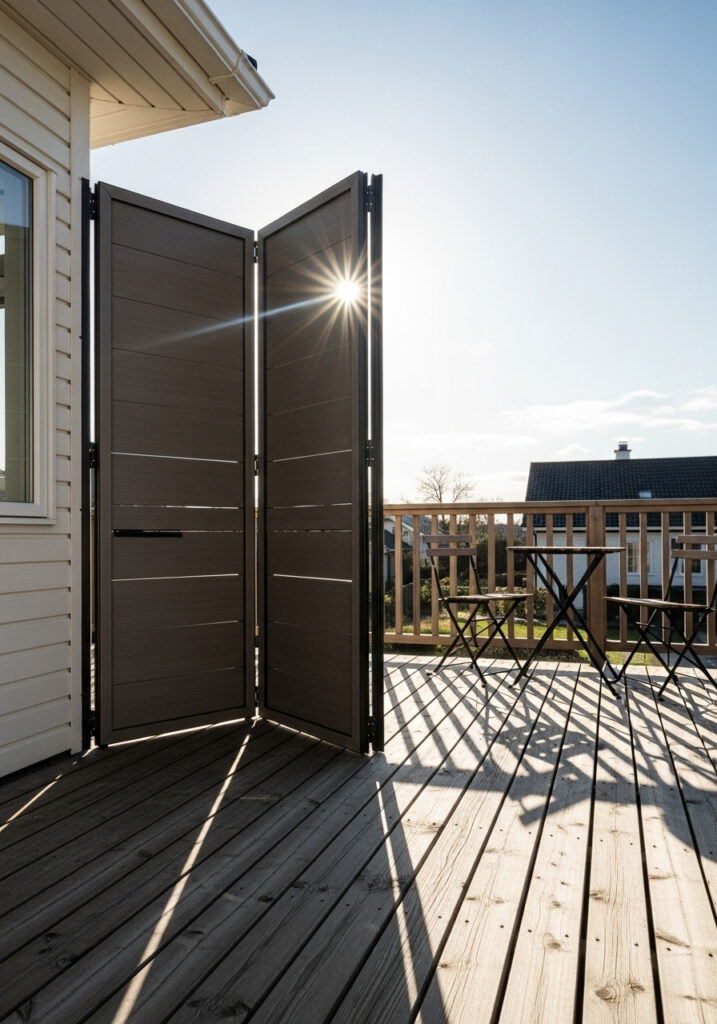
For multifunction decks, folding (bi-fold) partitions open for airflow and stack flat against the rail when you want a view. Lightweight composite or aluminum frames won’t warp outdoors, and magnetic catches keep the folded stack secure. Use three or four panels to span a seating zone and align hinge axes with deck boards for a footprint that stays tidy. It’s a renter-friendly option if you anchor to ballasted bases.
Corner Pergola with Partial Screen
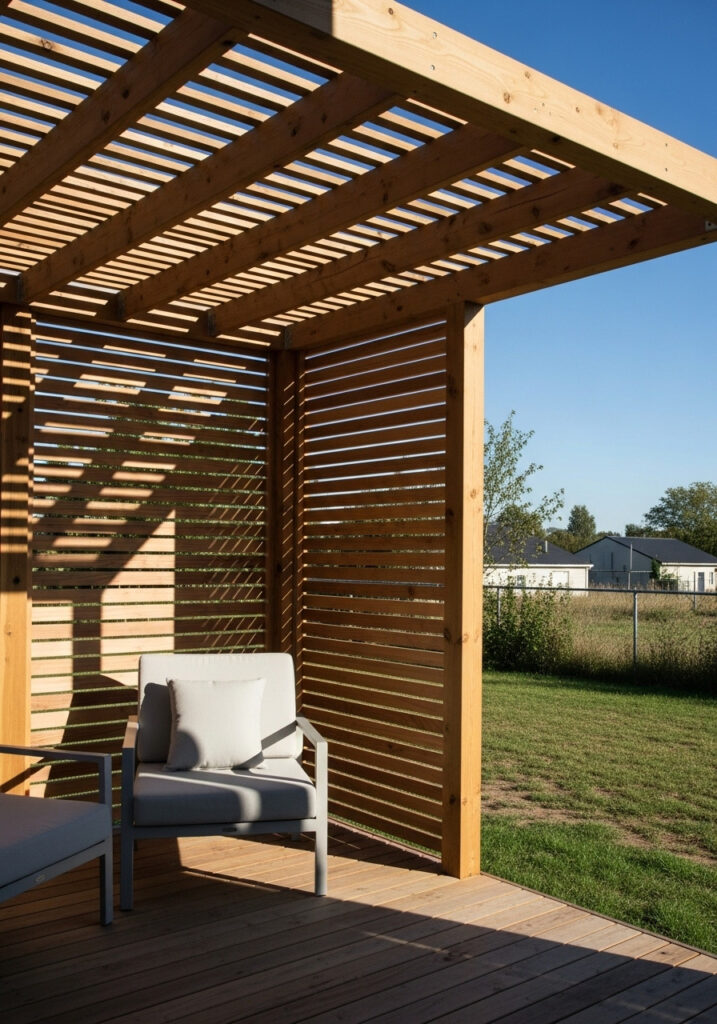
Rather than enclosing the entire deck, create a private pavilion in one quadrant. A small pergola with one or two screened sides delivers shade and seclusion where you lounge while leaving the rest of the deck open. Keep rafters shallow so interiors remain bright, and orient the screened side toward the closest neighbor or street. This approach feels lighter than a full wall and is budget-friendly to build.
Privacy Gate or Pivot Panel at the Stairs
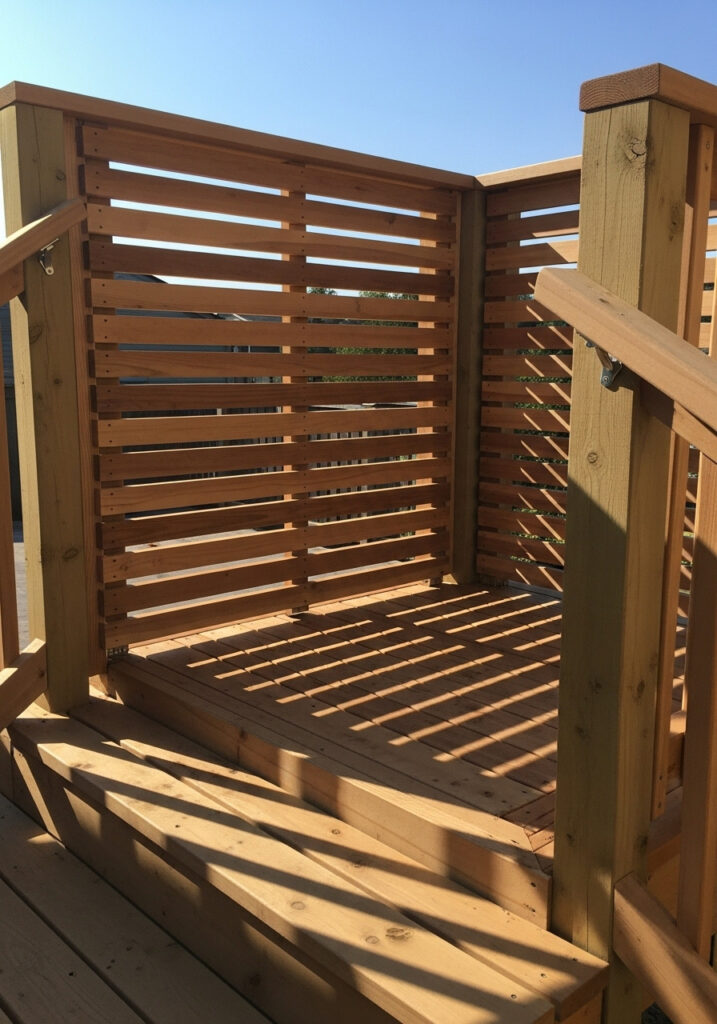
Stair landings often create the most exposed angle. A tall gate or pivoting panel at the landing blocks that sightline while keeping circulation smooth. A pivot panel turns like a door to open for carrying items and closes for relaxing. Use self-closing hinges for safety, match slat spacing to adjacent screens, and keep hardware minimal so the piece reads like part of the architecture.
Acoustic Water Wall in Front of a Screen
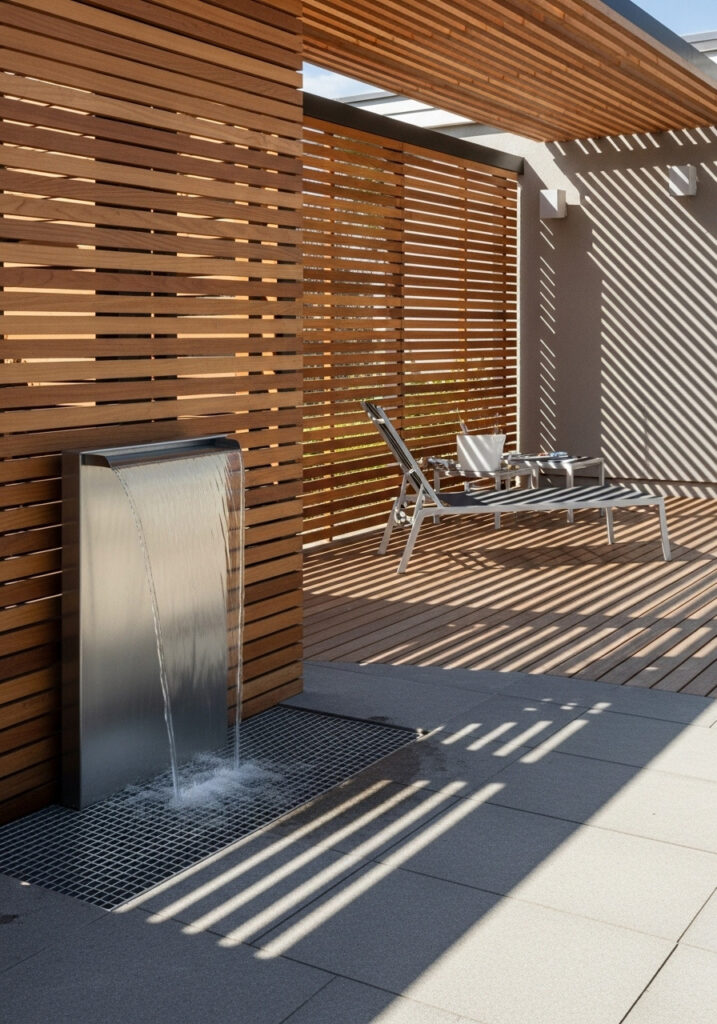
Visual privacy is great, but gentle sound masking can make a deck feel truly secluded. A slim recirculating water wall—stone or stainless—placed a foot in front of a screen adds white noise that blurs street sounds and conversation. Choose a laminar weir for a clean sheet of water into a grated trough, keeping the deck dry. The piece disappears against the screen and won’t compete with furnishings.
Low Wall with Cap Ledge
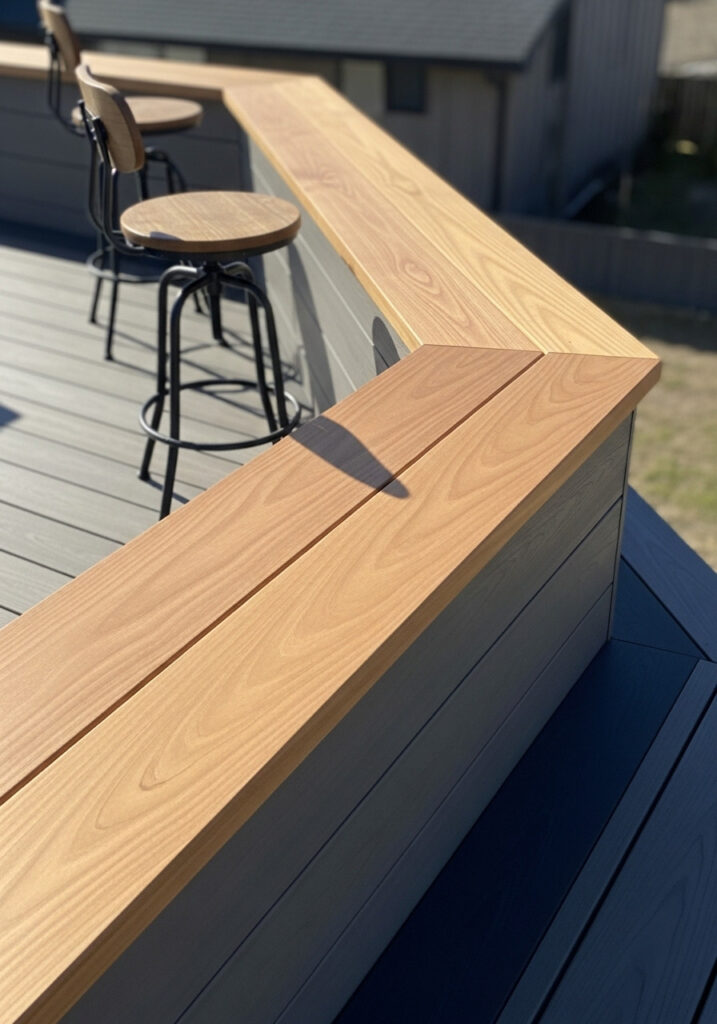
A 36–42-inch solid wall along a neighbor side gives seated privacy without blocking sky or breeze. Build with composite or fiber-cement panels, then top with a wide wood or stone cap that doubles as a perch or serving ledge. Integrate hidden access panels where utilities run, and align the wall with railing posts for a continuous, intentional line. It’s an HOA-friendly move that reads architectural rather than ad-hoc.
Meet Tomas Clayton, a seasoned plant gardener who has been passionate about horticulture since he was a child. Tomas John developed a love for the natural world and a strong appreciation for the beauty of plants while growing up on a farm.

